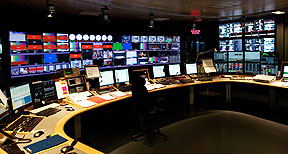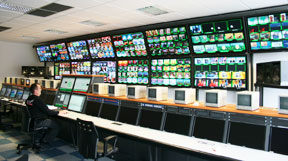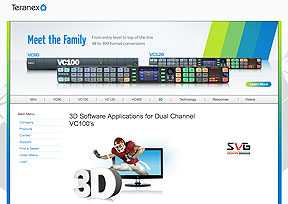- Danmon Systems Group (DSG) will exhibit its full range of systems integration services on stand 4R2-06 at Broadcast Asia, Singapore, from June 21st through the 24th. DSG is a highly experienced provider of systems integration support to television and radio broadcasters, postproduction houses and professional audio studios, as well as the corporate, academic and government sectors. DSG's fields of activity include every aspect of broadcast and electronic media technology, from consultancy to production and postproduction, transmission and archiving, encompassing video, audio, graphics, streaming, audio visual and multimedia applications. DSG is a part of Dan Technologies Group which has more than 125 proactive and strongly-motivated staff operating internationally from offices in Denmark, Sweden, Norway, Germany, the United Kingdom and Vietnam. DSG is currently involved in the design of a new media building for a private broadcaster in Russia. DSG will be working in partnership with a Danish engineering company which has contracted for the design of the media house. The new building is expected to be ready for operation in 2015. Peter Thomsen (Deputy Managing Director), Bjarne Pedersen (Chief Representative of DSG's Hanoi office) and colleague Lien Nguyen will be in attendance throughout the show.
- At its stand at BroadcastAsia 2011, Harmonic will showcase a range of solutions that support broadcast workflows from end to end. Among the distribution and delivery products to be demo'd is the ProStream 4000 multiscreen transcoder optimized for adaptive streaming applications that enable operators to meet growing demand for OTT and mobile TV services, while improving the video viewing experience. New capabilities include increased scalability, premium H.264 video encoding, multi-encapsulation, and expanded compatibility with a range of content distribution networks (CDNs) and digital rights management (DRM) software. To manage the complexity of multiscreen and OTT applications, ProStream 4000's high-density configuration now supports the simultaneous processing of up to 48 video inputs and 48 legacy mobile phone, 18 iPhone®, 12 SD, or four transcoded HD video outputs per single rack unit (1-RU). The new built-in multi-encapsulation feature enables operators to encode once and encapsulate to a variety of target video formats, such as Apple® HTTP Live Streaming, Microsoft® Smooth Streaming, and Adobe® HTTP Dynamic Streaming, as well as multi-bitrate transport streams for NDS and Widevine Adaptive Streaming. Also on display will be Omneon MediaGrid™ V3.0, a new version of the Omneon MediaGrid™ active storage system that dramatically lowers the cost of storage capacity while maintaining the industry-leading performance required by next-generation media workflows. Omneon Spectrum MediaCenter, a new multichannel media server with integrated low-cost storage and support for Spectrum MediaPort modularity and scalability, will also be in the booth as well as the Omneon MediaPort 7000, a series of video I/O modules for the Omneon Spectrum™ media server system.
- Slovenia-based Satellite Telecommunications Network (STN) has added eight new channels using a new Miranda iTX IT-based automation and playout system. The additional iTX channels are delivered for SAT7, bringing the total number of channels that STN provides services for to more than 300, with clients spanning Europe, the Americas, Africa, the Middle East, and Asia. To provide an advanced and highly flexible graphics capability, all the new STN channels are equipped with Miranda Vertigo XG advanced graphics processors, which operate downstream of the iTX Output Servers. These graphics processors are used for a wide mix of channel branding, including interactive and data-driven graphics, as well as in-show promos. Miranda’s iTX IT-based automation and playout system uses enterprise grade IT servers and software to unify and streamline ingest, media management, schedule management, asset management, automation, signal processing, master control, graphics and multi-format playout. This IT-based architecture reduces the complexity of facilities and simplifies maintenance, while also improving the quality of service. By handling all stages of the production and delivery process under a consistent user environment, the system also delivers unprecedented increases in efficiency, scalability and speed of response for media businesses.
- Digital Factory, a French postproduction facility, has selected Teranex VC1-2D-3D real-time 2D to 3D conversion technology to convert selected archival and new 2D content into simulated 3D programming. An option for dual channel Teranex VC100 processors, the VC1-2D-3D provides the ability to convert 2D content for 3D distribution while keeping all existing VC100 features such as frame synchronisation and more than 250 format and frame rate conversions. Digital Factory has been using the VC100 for several years and views its software upgradeability as an added advantage over other products. Technical Director Frédéric Warnotte says Digital Factory uses the VC100 on almost every job. He has reviewed the VC1-2D-3D's performance since last autumn and believes the company will now be able to transform 2D archives into simulated 3D. Digital Factory's objective is to use 2D material when possible as part of its increasing 3D post-production efforts. Being able to repurpose and use 2D content is a must for cost-effective 3D post-production and distribution. Demonstrated by Preco at Broadcast Video Expo in London during February, the VC1-2D-3D can be programmed to generate real-time depth information from spatial and temporal clues derived from 2D video content. This allows it to deliver credible 3D without the visual distraction seen in less advanced systems. The VC1-2D-3D is ideal for networks which want to include monoscopic source material into their stereoscopic programmes during the transition between 2D and 3D broadcasting. The system was recently selected by public-service German broadcaster ZDF to process selected 2D content for 3D.
Satnews Daily
May 17th, 2011
Danmon Systems Group | Harmonic | Miranda | Teranex (SatBroadcasting™)
Danmon's demos @ Broadcast Asia... Harmonic @ Broadcast Asia with... Miranda tech supports eight new channels... Teranex selected for simulated 3D programming...





